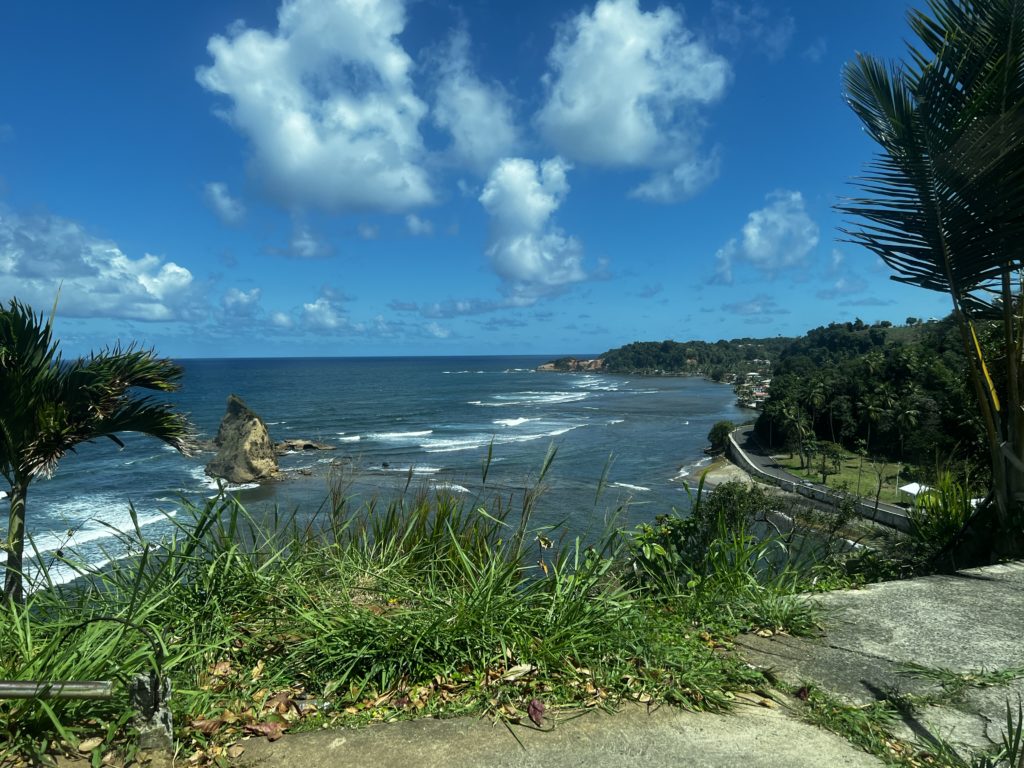
Before we get to the present, let me bring you up to speed. Wow! Dominica knocked our socks off! (fortunately we weren’t wearing any) We ended up staying for over three weeks hiking and touring and enjoying time with the local populous. We did get in some great diving with the local guide, Fabien. You are required to dive with a guide in Dominica and we picked a winner. Most dives included only Nancy and I and we never had more than four total. Many of the boats we saw carried as many as 15 divers!!! Fabien and his assistant Filipo ran a fun boat and the dives were exciting and enjoyable. We usually stopped at a local cafe between dives. Bonus! The visibility was 70′ or more and the marine life was bountiful.
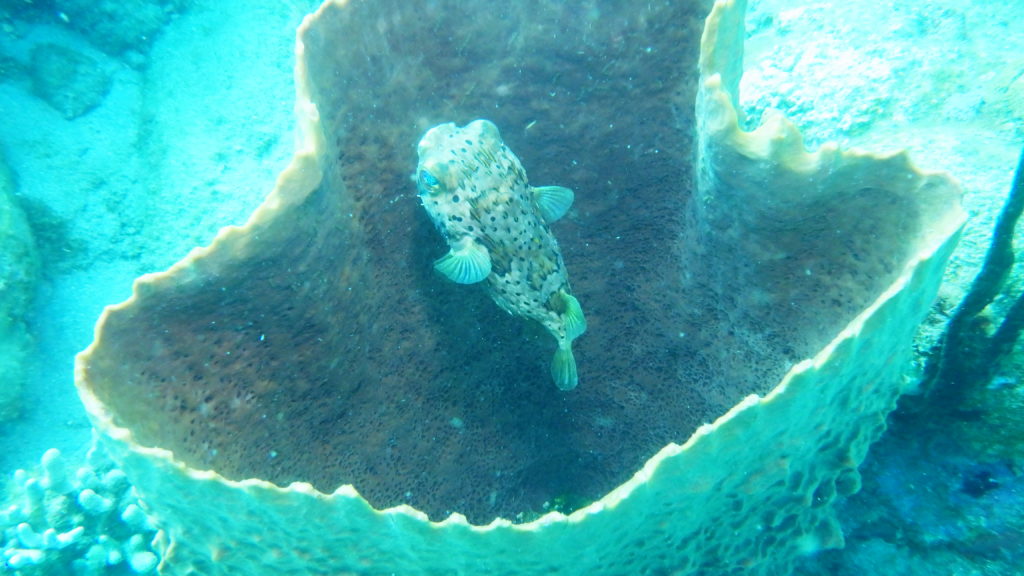
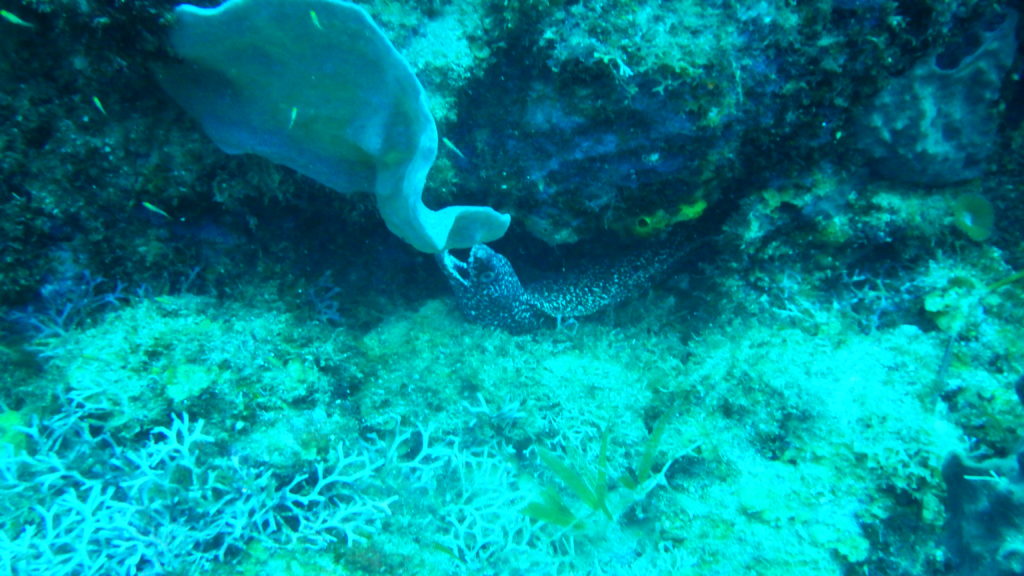
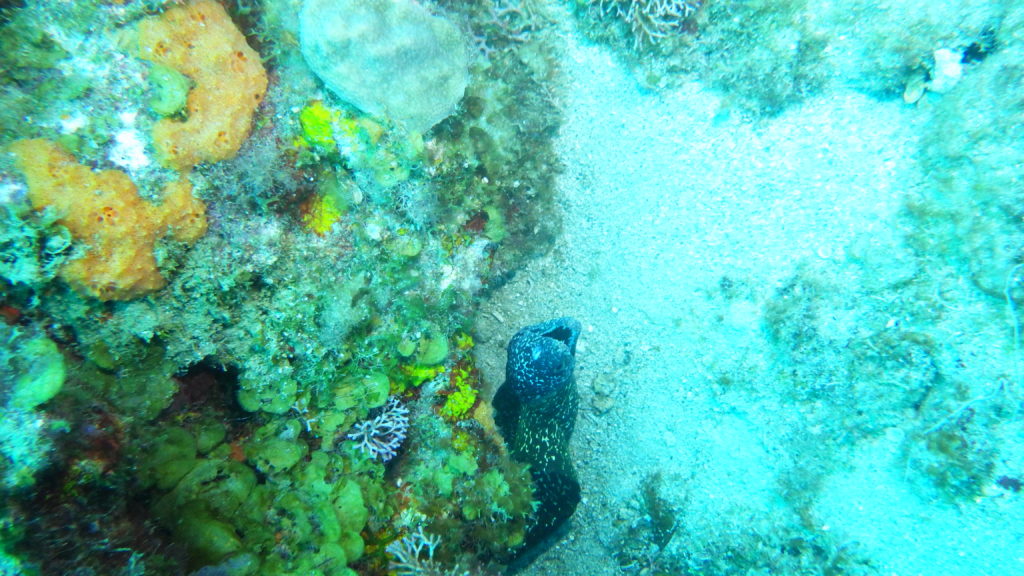
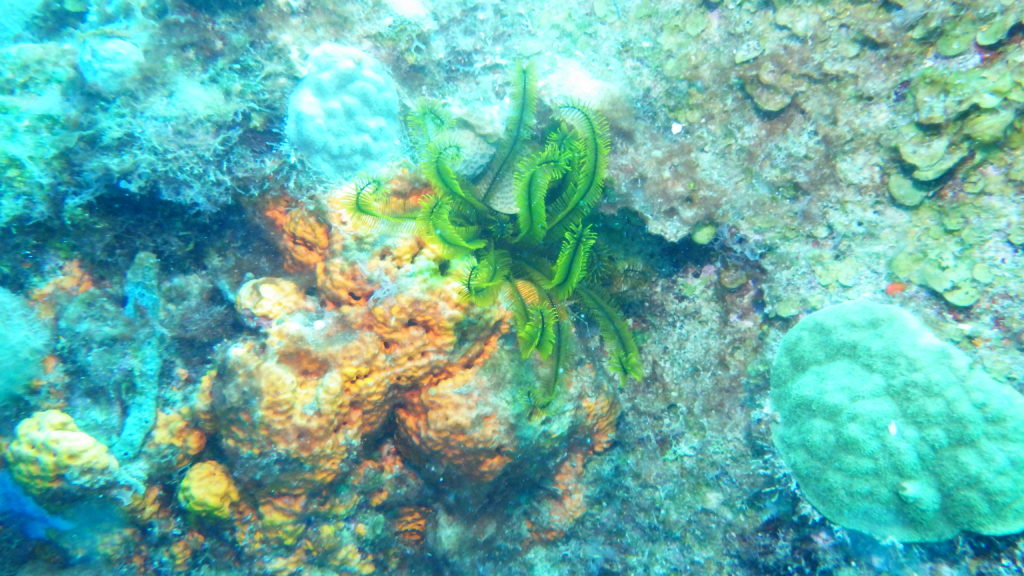
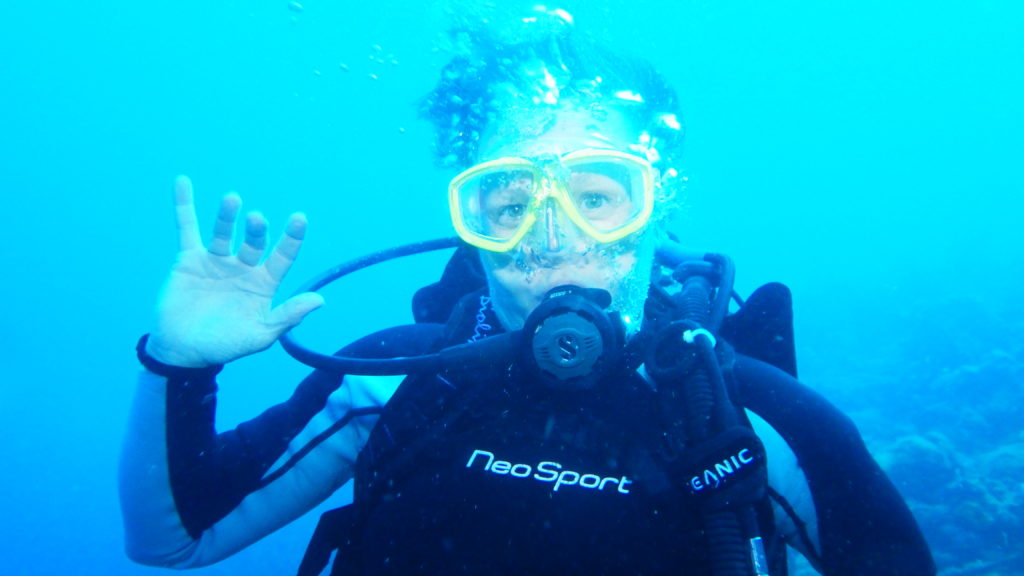
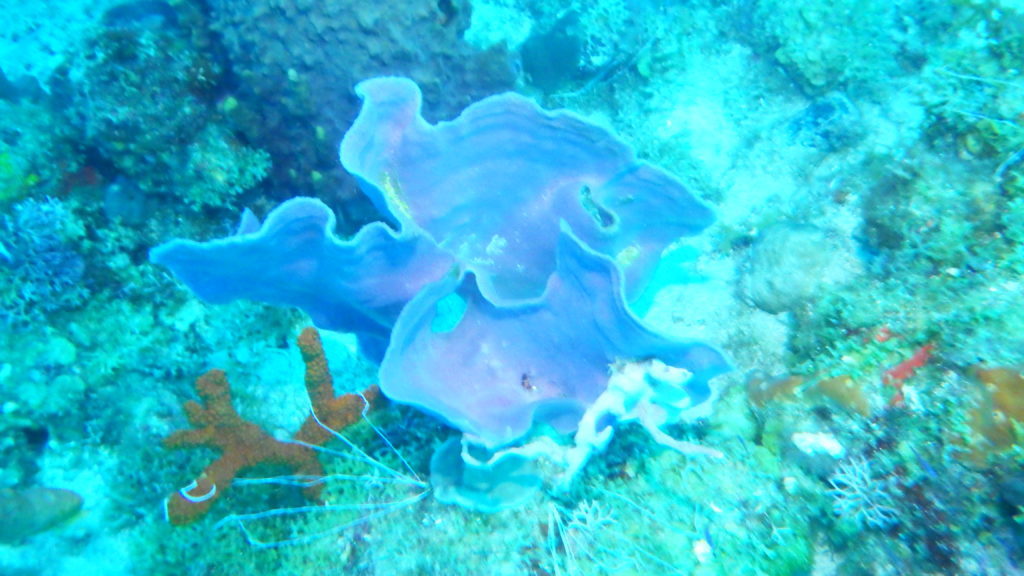
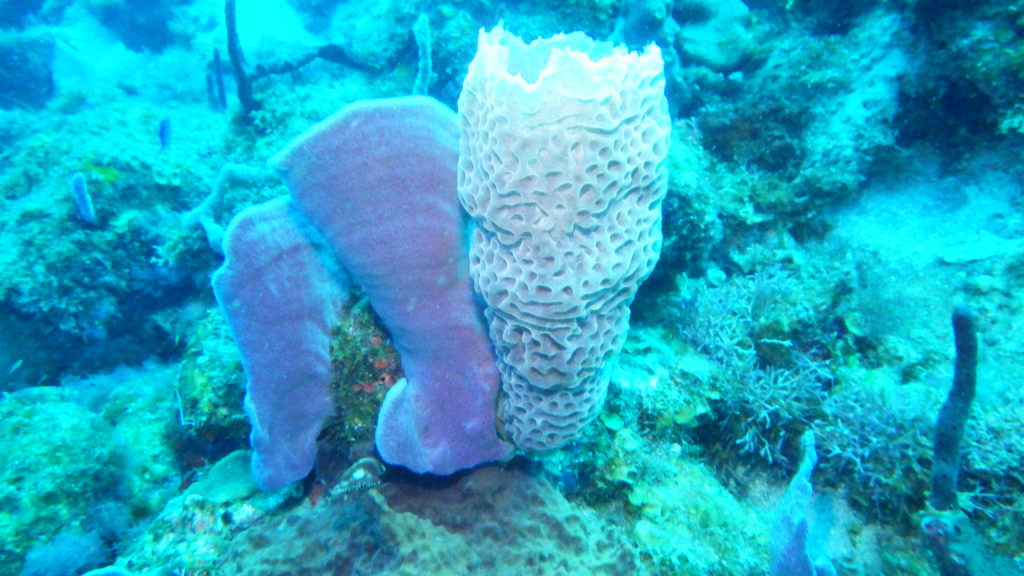
The anchorage in Portsmouth is monitored by a group of local boat guys called PAYS (Portsmouth Area Yacht Security) they maintain the moorings and the pier, provide water taxis, as well as coordinate barbecues and tours. They’ll even run your customs paperwork for you. All for tips and contributions. It is a benefit to the cruising community and provides collective income for the independent members. Cobra, the current head (whom you met in the last post) is working hard to keep it growing.
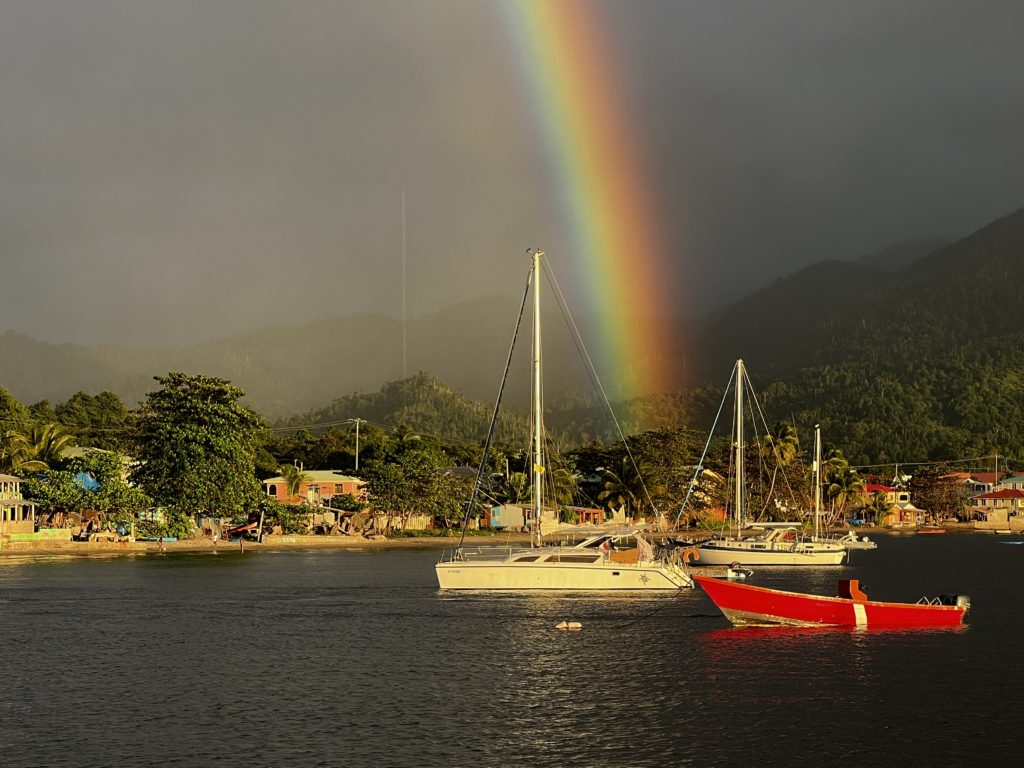
We hired Ken to take Nancy and I on a tour through the top of the island. He first took us back to Syndicate falls (Nancy missed the first trip) and we had the pool to ourselves. We had a great swim and even went behind the falls. Then up into the caldera of the volcano to inspect the cold sufriere which is a volcanic sulfur vent that has cold water instead of the hot we are used to. Strange phenomena that. A wildly winding road that was 20 miles long to get us 4 miles away (I was dreaming of the TR3) took us down to the Atlantic coast for lunch. A trip to a small chocolate factory for some goodies and then back to the boat.
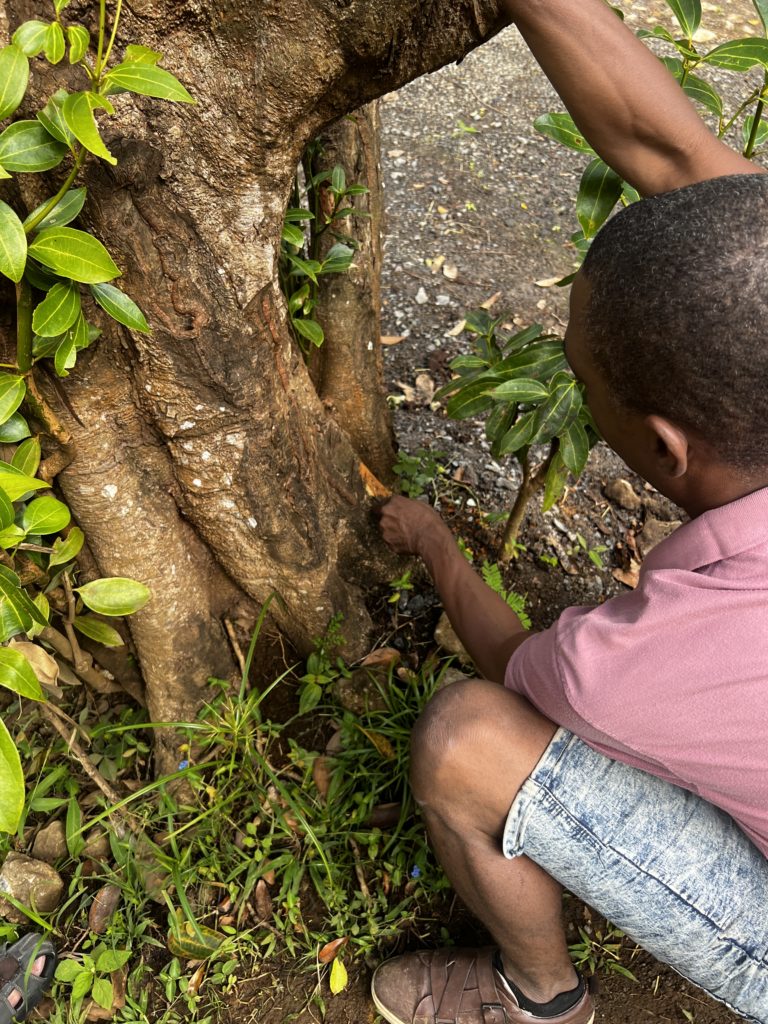
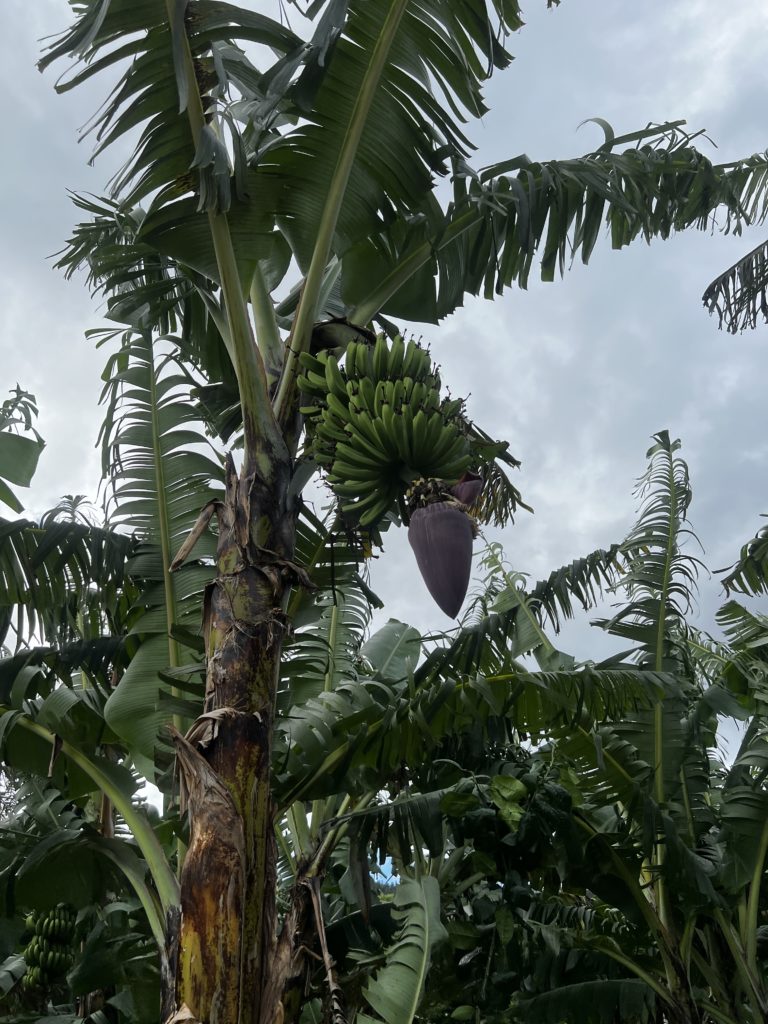
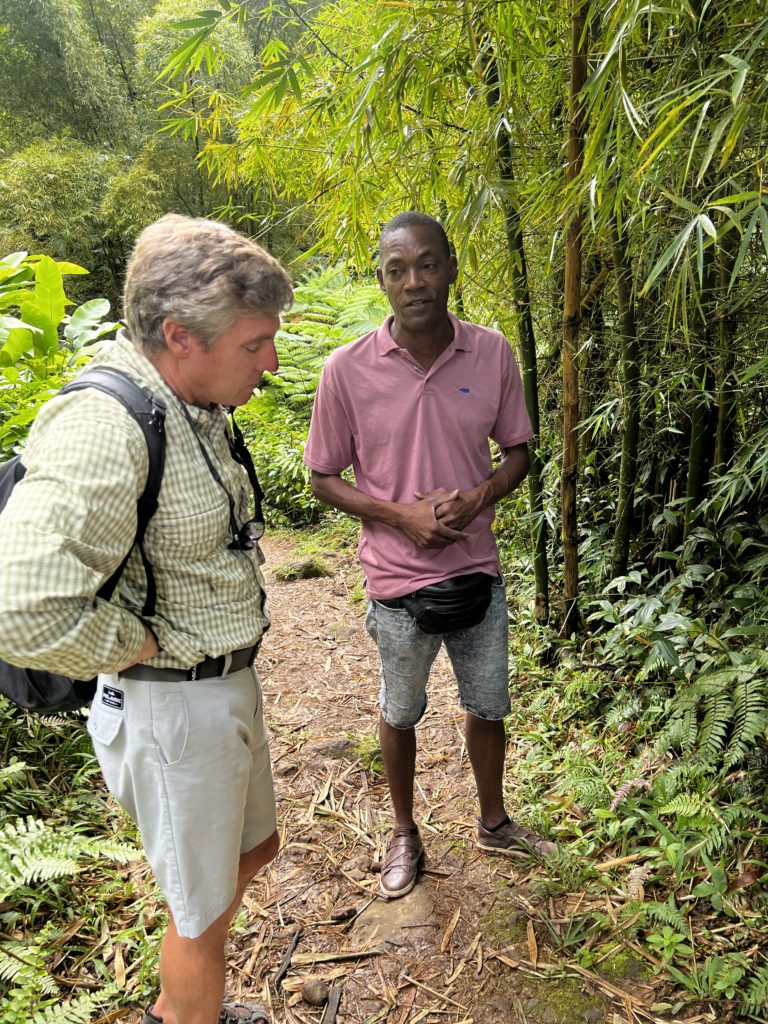
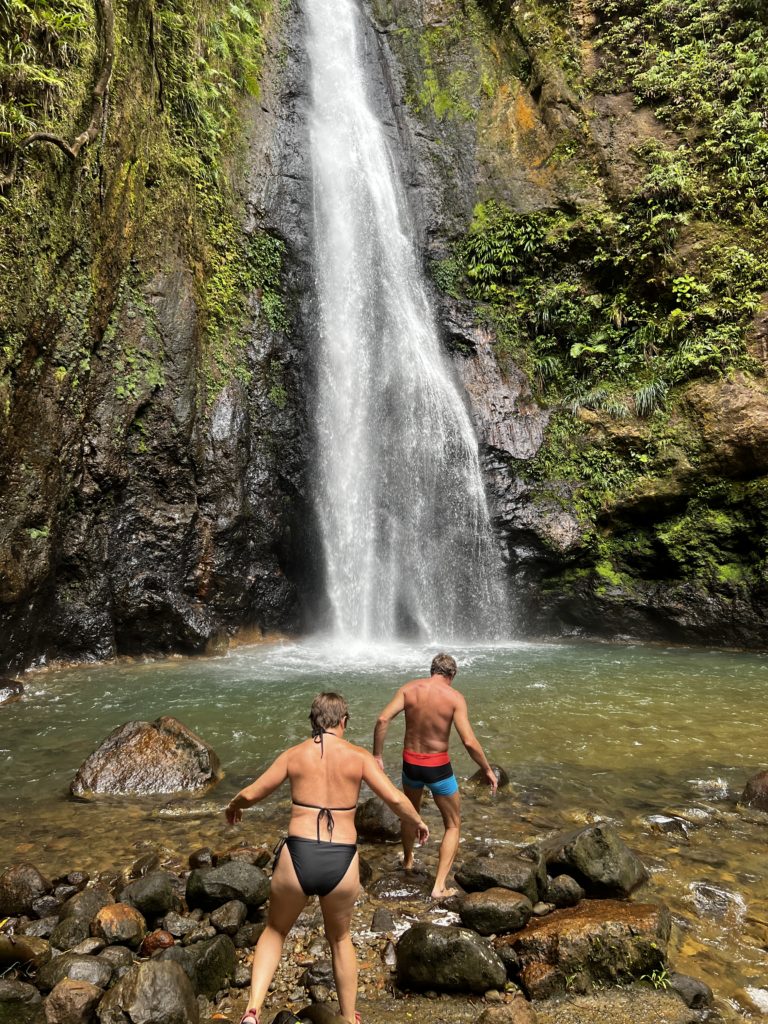
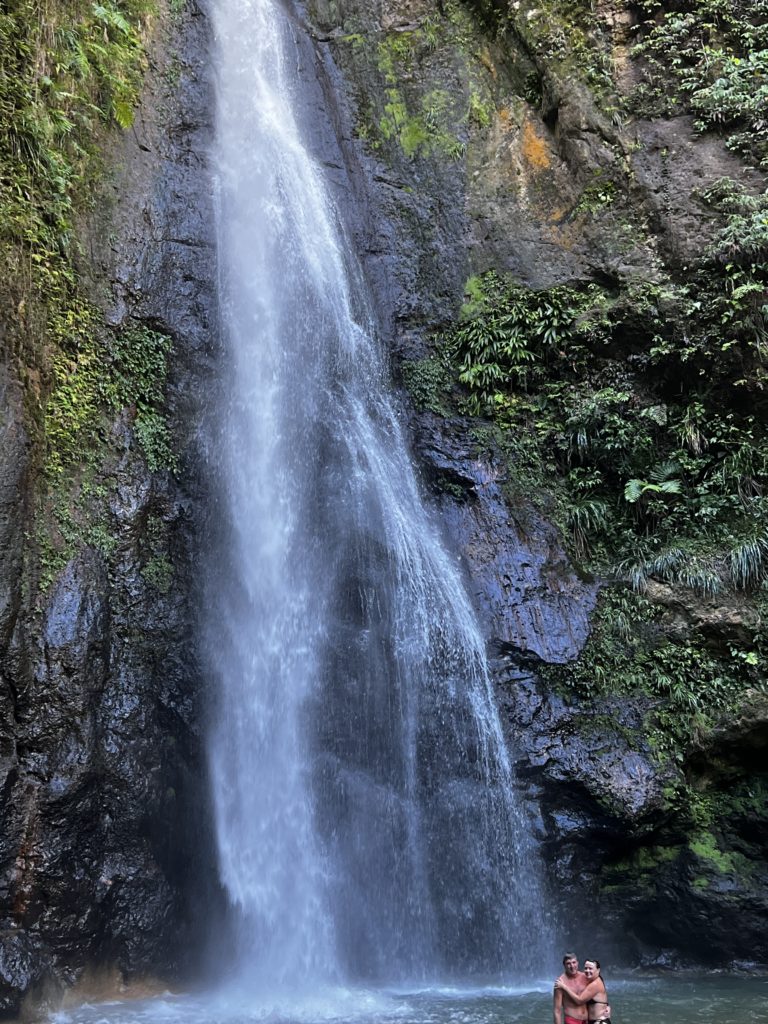
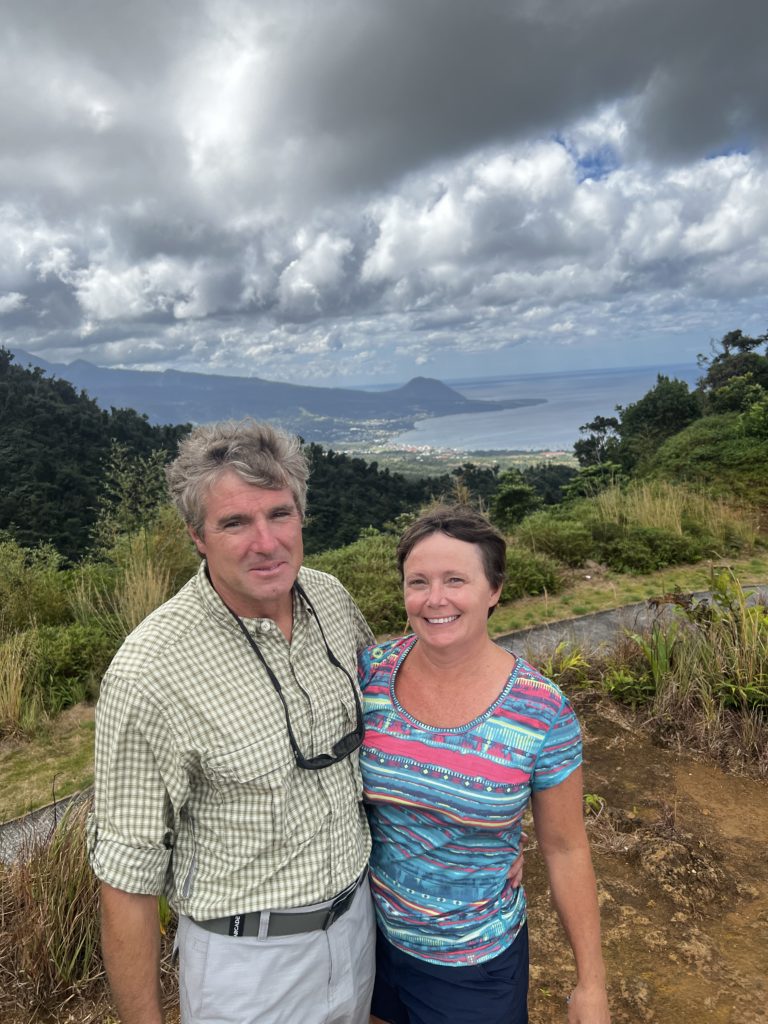
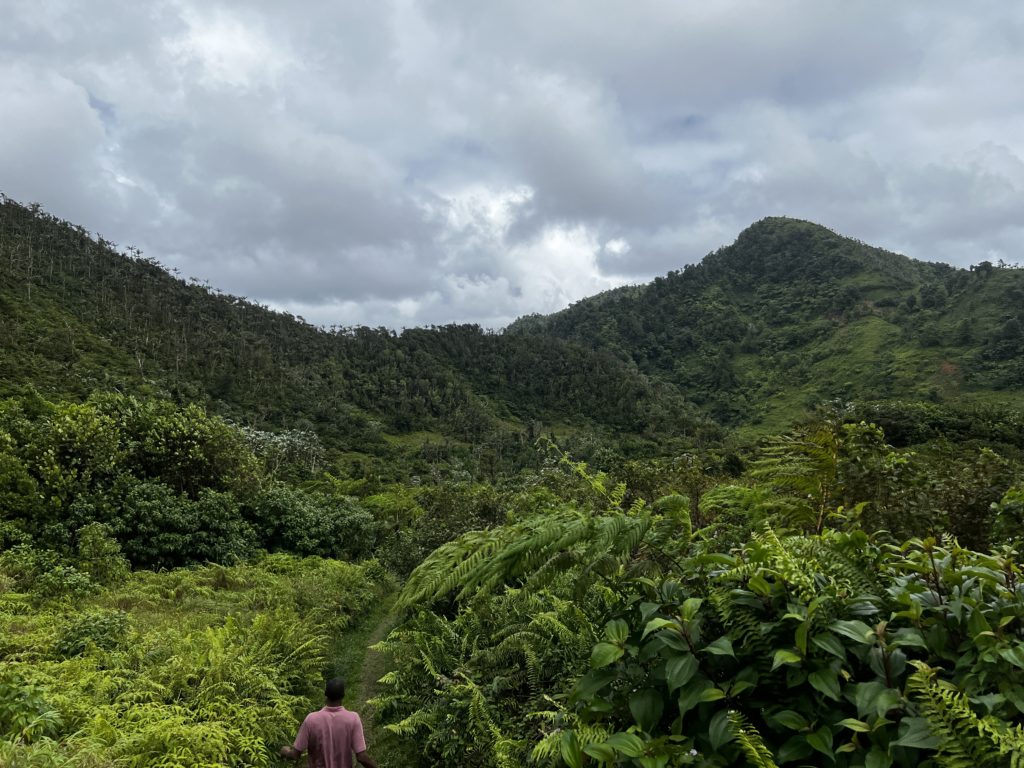

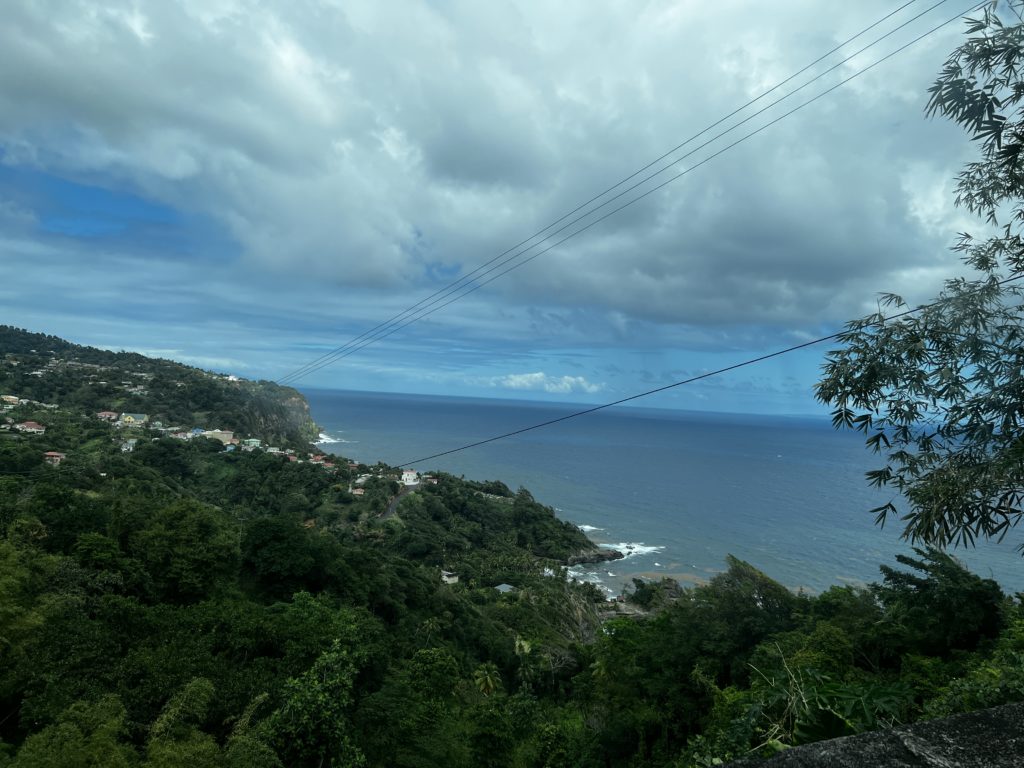
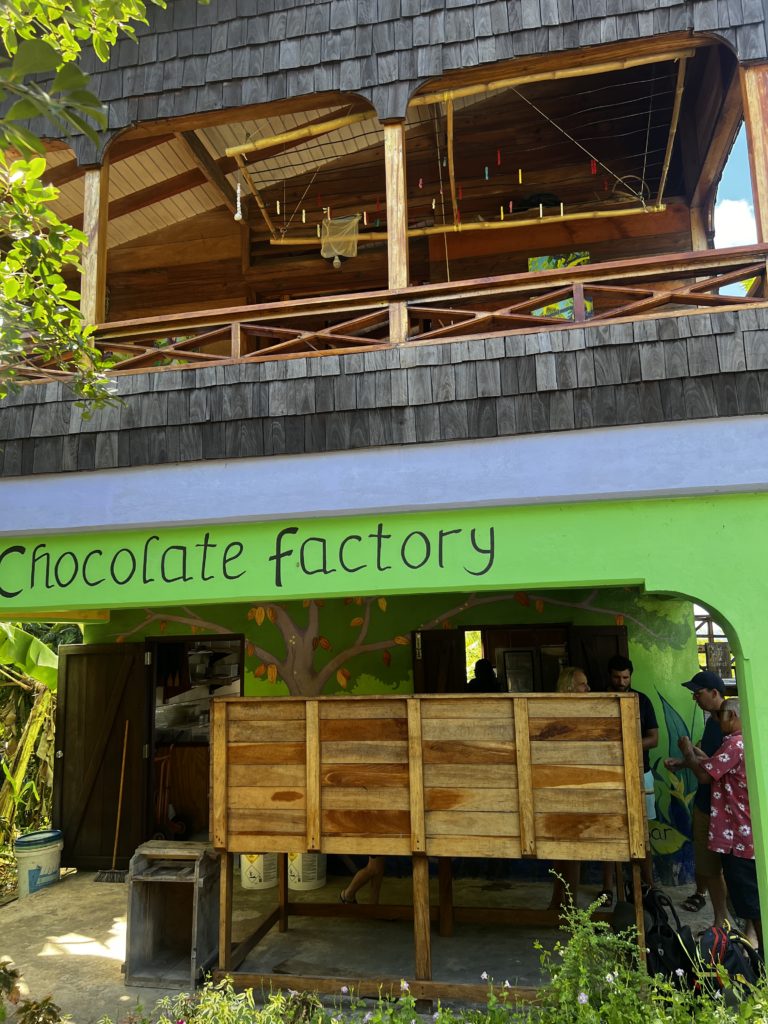
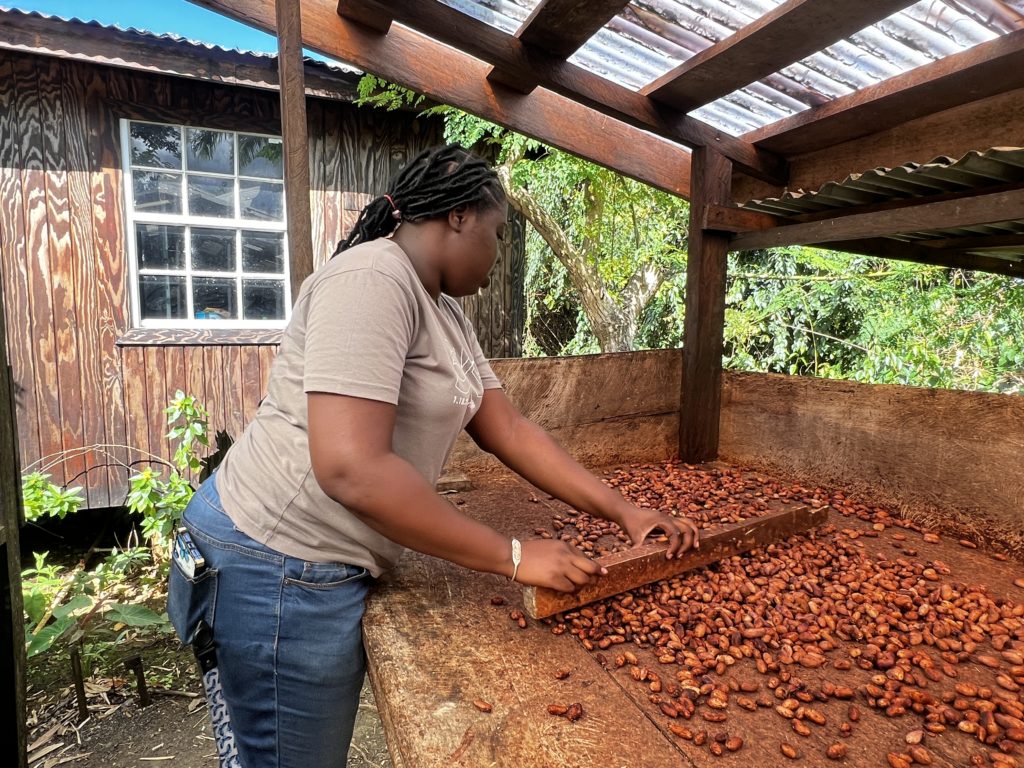
So, now I’m going to tell you about the best part of Dominica: TOMATOES! The island has several different ecosystems, from rainforest to arid lowlands and each produces different, well produce. Pineapples to potatoes. Bananas to beans. But the best tomatoes I have ever had come from the gardeners in the borough of Wotten Waven (no I’m not channelling Elmer Fudd). Meaty, juicy and redder than any red I know. I’ll miss the good fruits and veggies, and the colorful characters that sell them in the market square.
So we’re off to Martinique. We had a pleasant sail down to Sainte Pierre where the anchorage is broad but thin. The bottom drops from 50′ to 200′ 300 meters from shore, and everyone wants to get in close, ugh. St Pierre is notable for the volcano Mt. Pelee which erupted on 8 May 1902 and covered the city in hyper-heated ash and gas, killing more than 30,000 people in less than 3 minutes, sinking 12 ships in the harbor and leveling the town. Only two survived; a cobbler and the now famous prisoner Cyparis, who was trapped in his cell for three days after the eruption. Prior to the eruption it was the economic and cultural center of the island, with a beautiful cathedral and theater, large prosperous plantations and broad cultural diversity. Unfortunately it was election time and everyone had gathered in town to participate. Despite the volcano being active for a few weeks prior, and sending lethal mudslides throughout the area, the governor recommended everyone stay put. He wanted those votes. He was killed along with his constituents.
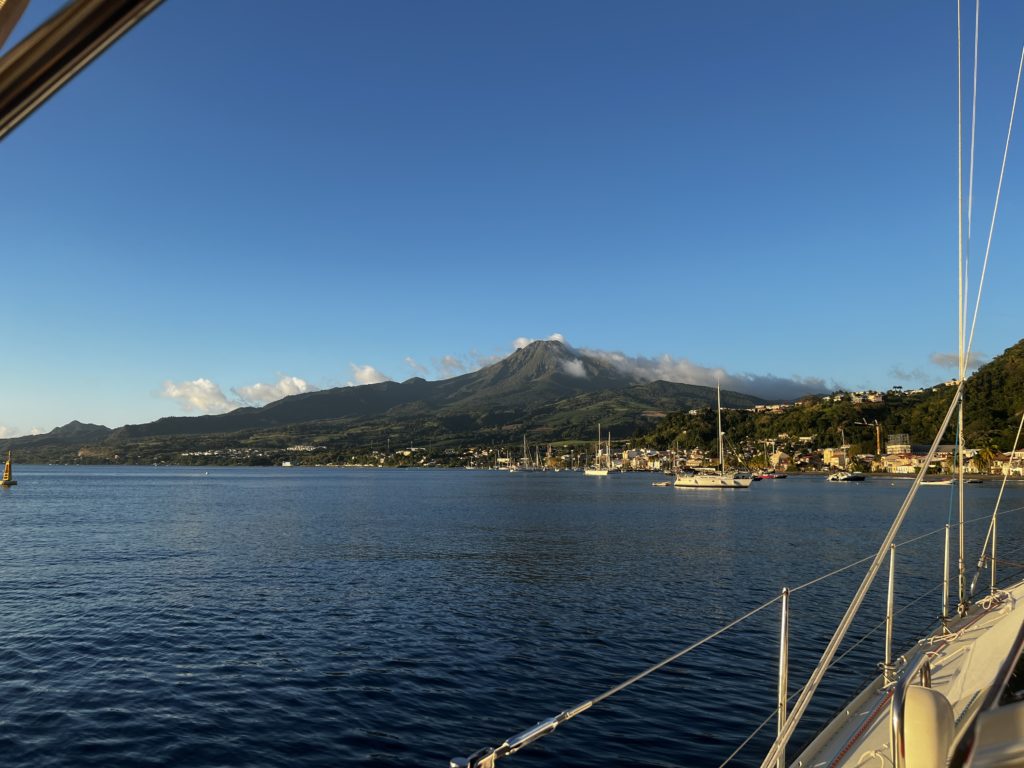
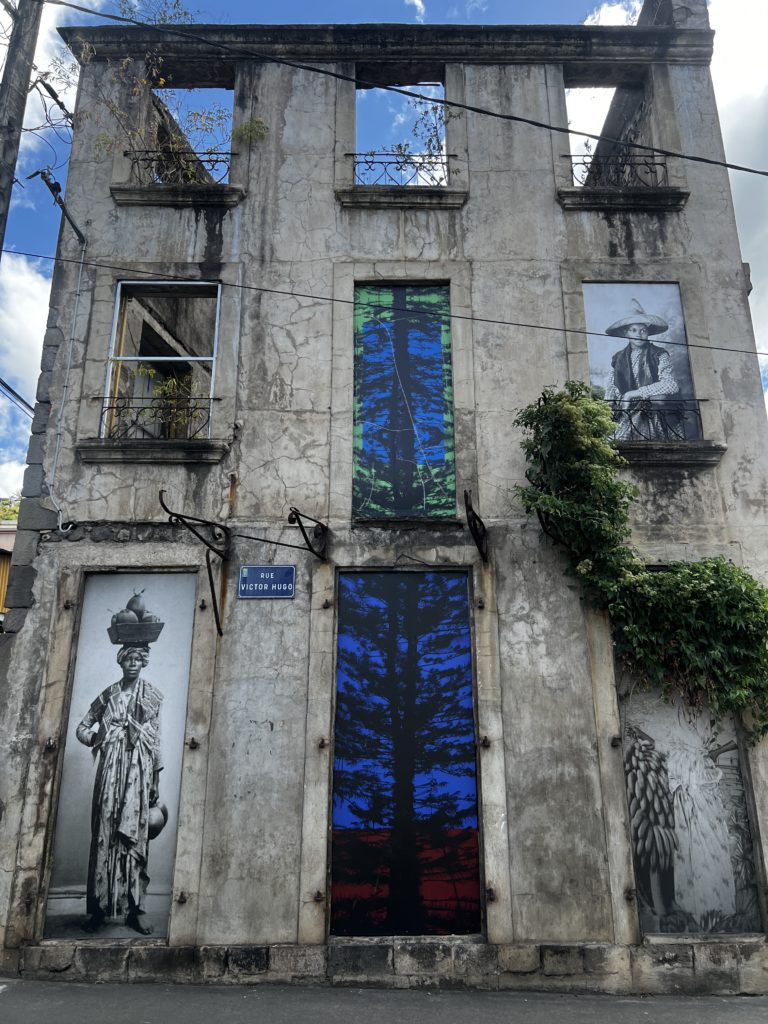
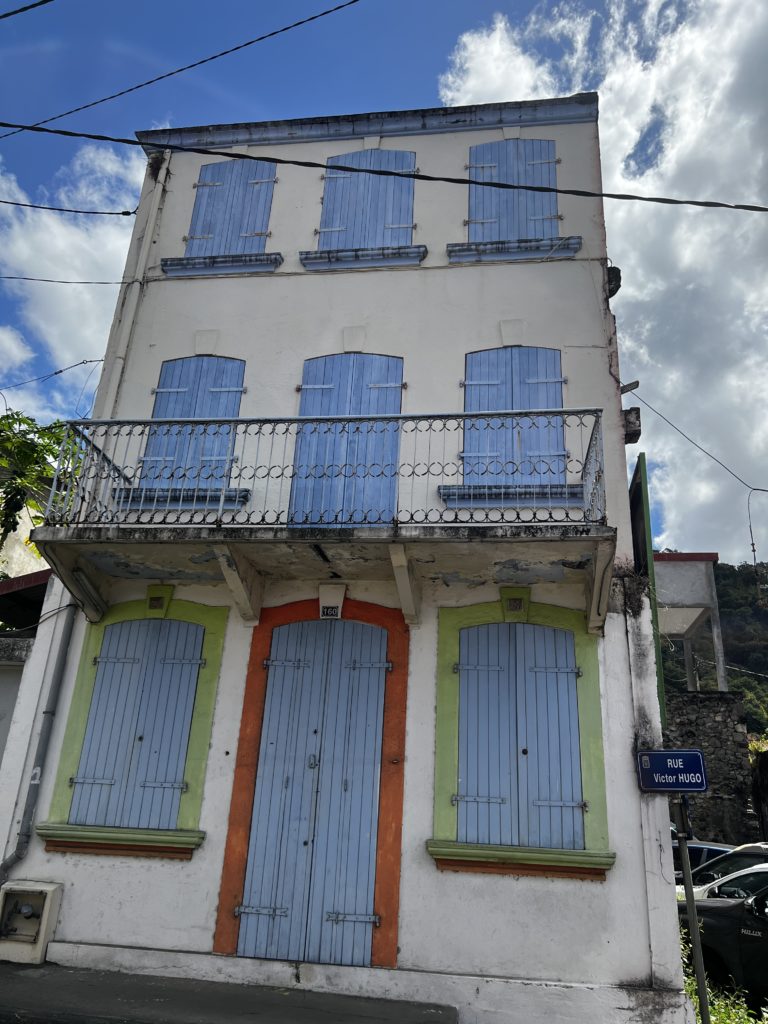
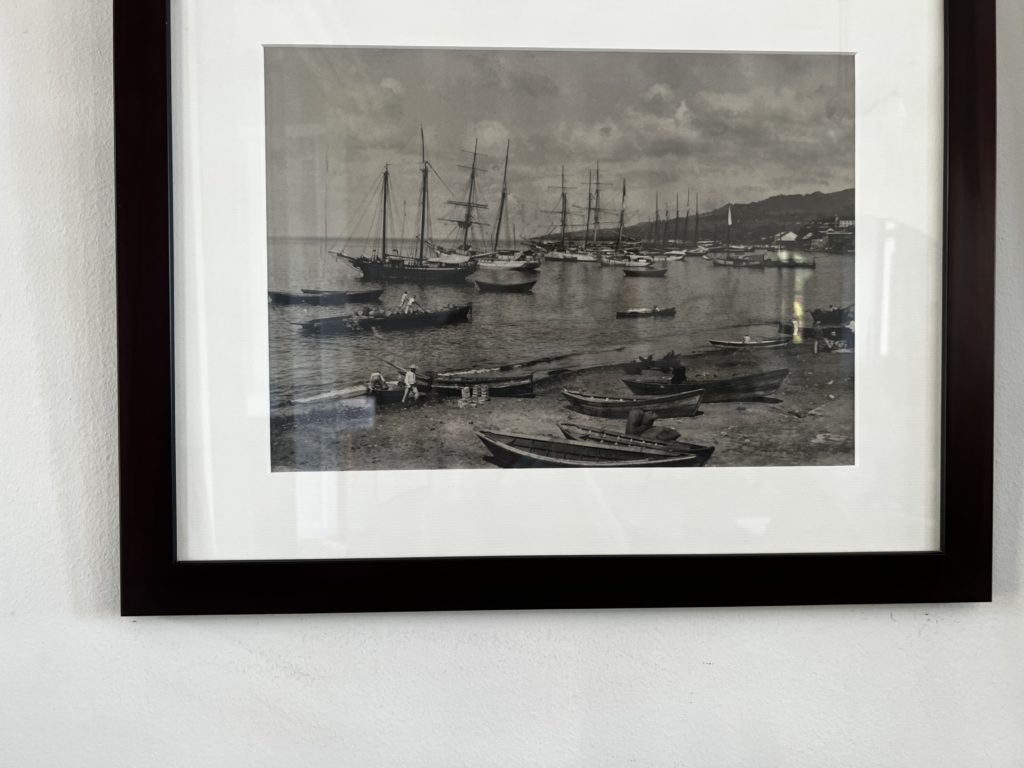
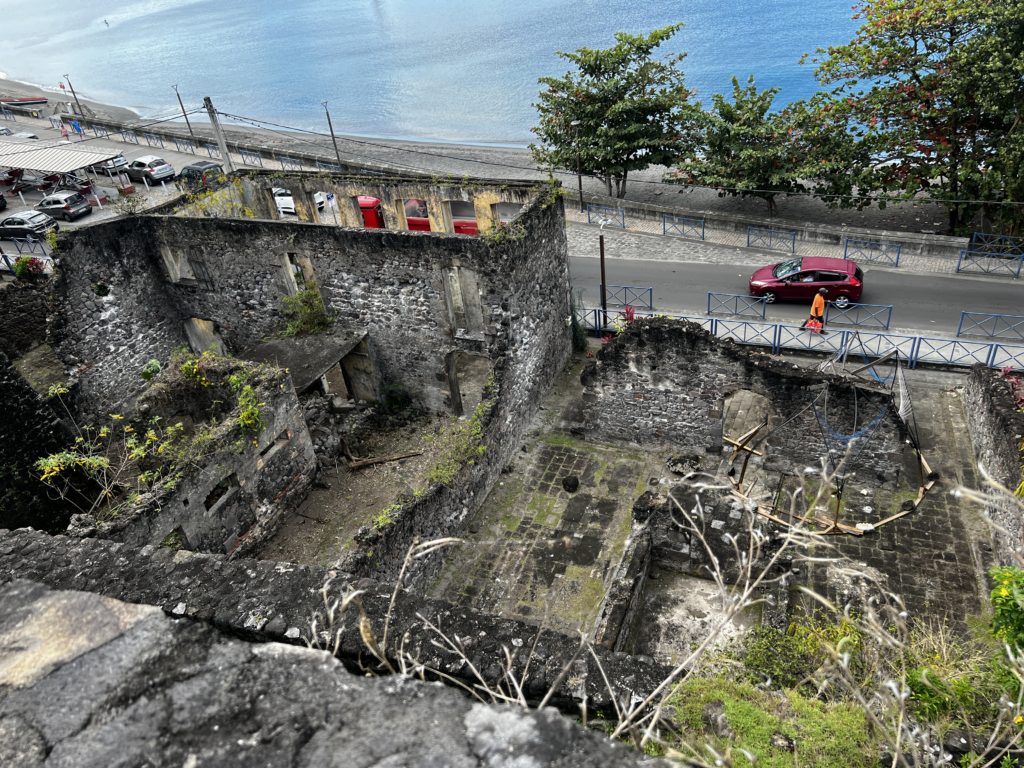
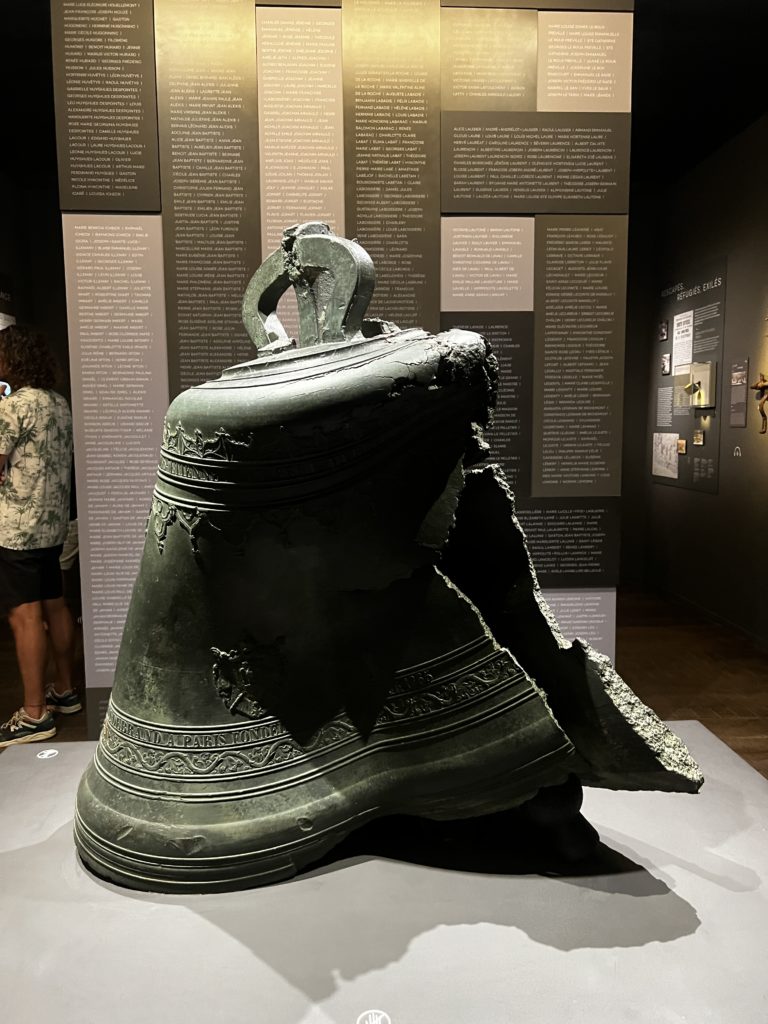
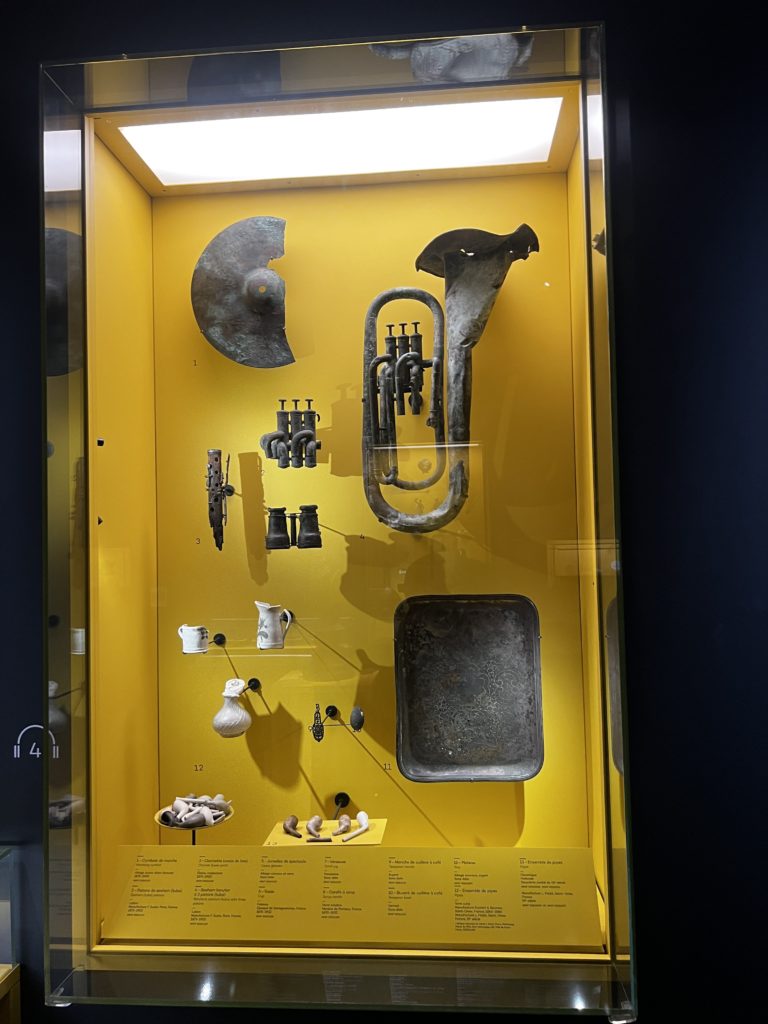
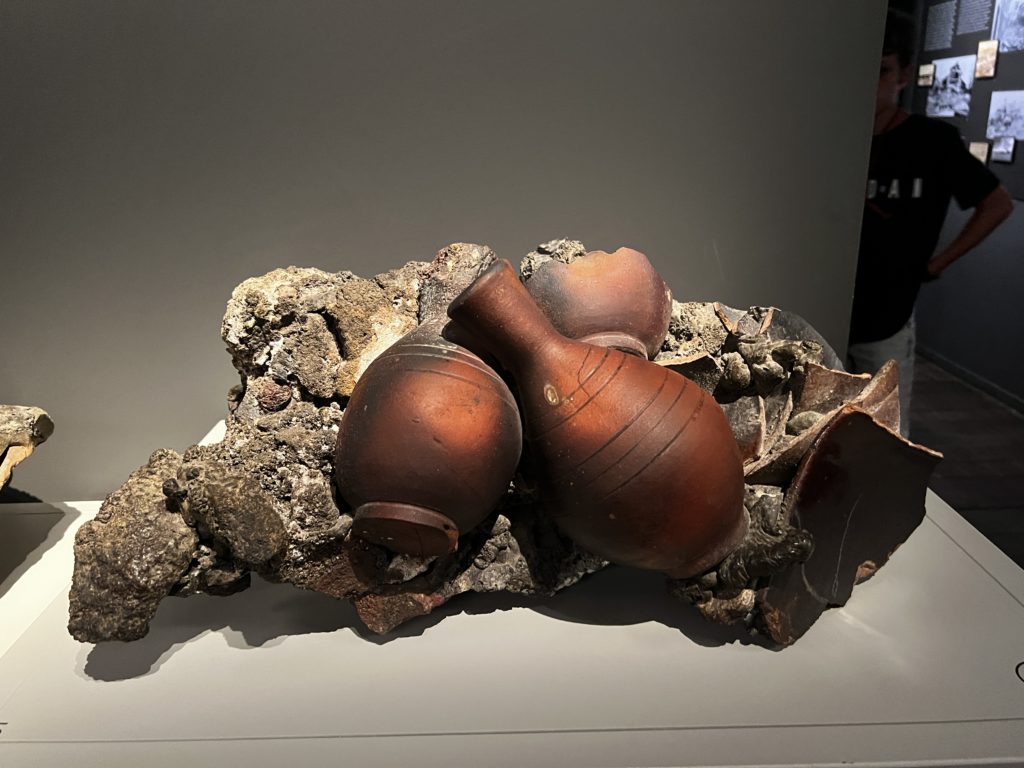
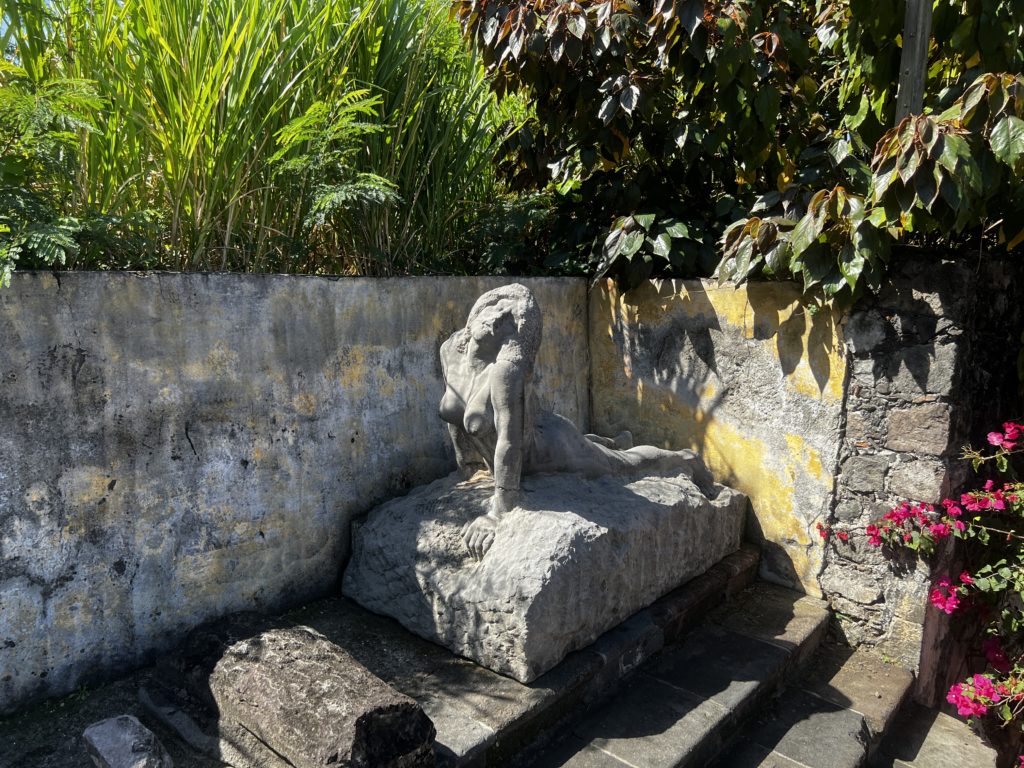
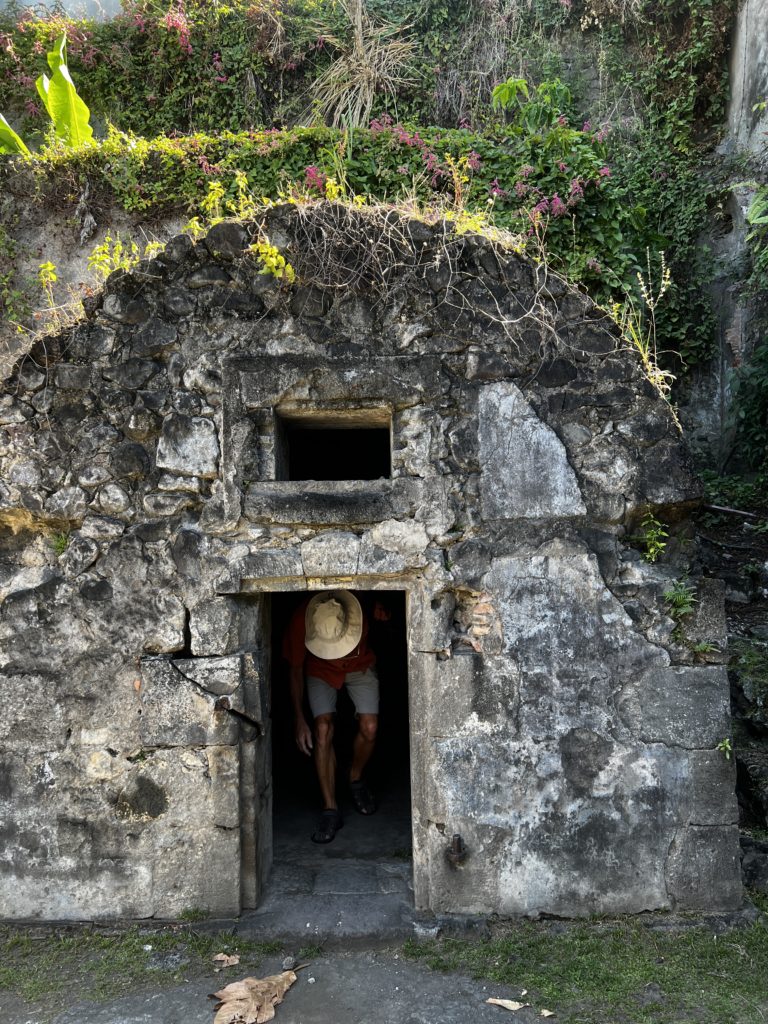
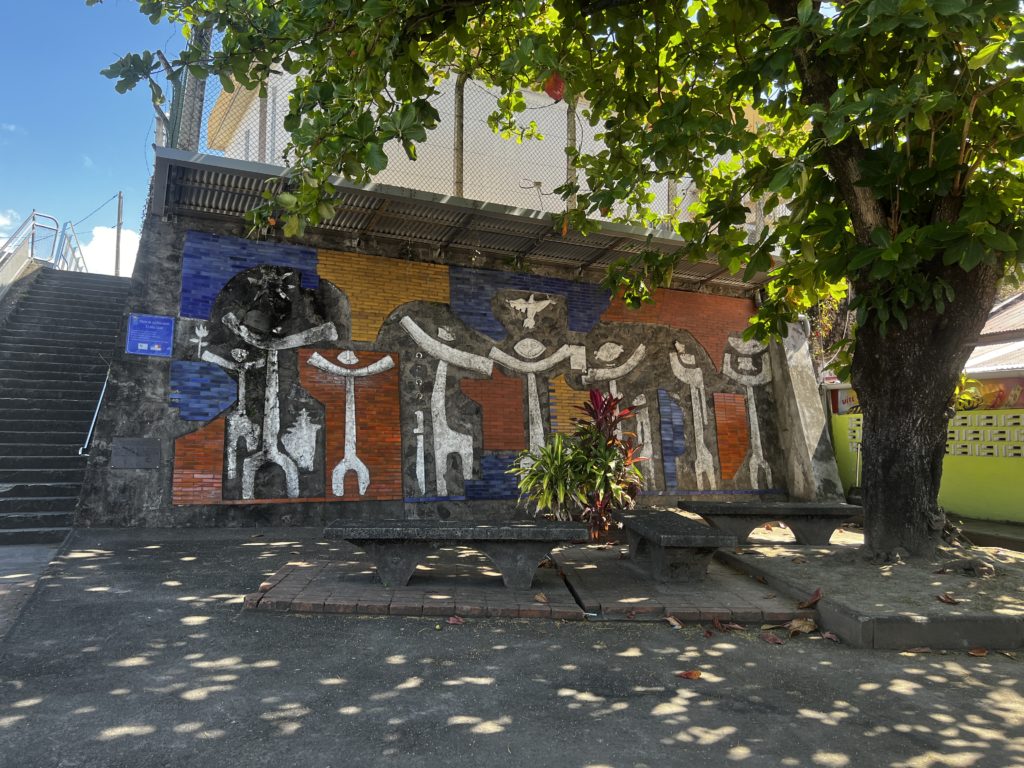
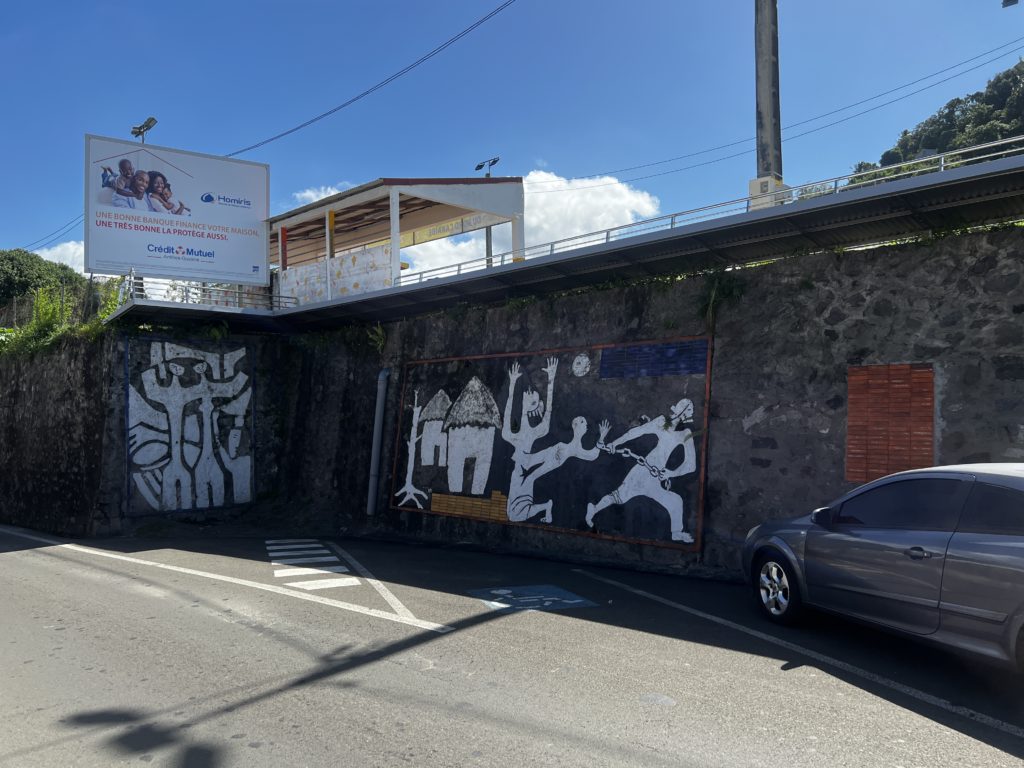
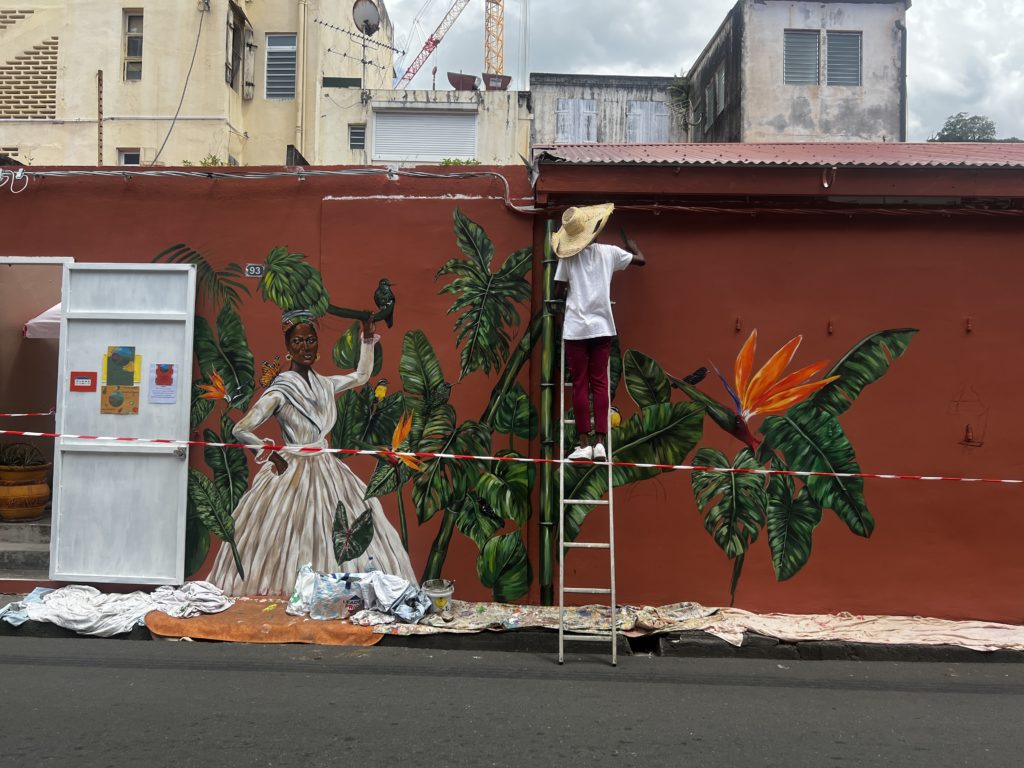
Today, St Pierre is a bustling center of some 7,000 people with many ruins still maintained in honor of those lost. The prison and the theater predominant among them. Many of the modern structures are built on the remains of the old buildings giving the town a very ancient feel. We walked many miles up and down hills exploring the history, including a museum of the Catastrophe of 1902. Nancy and I trekked 3 miles up hill to the Depaz Rhum Distillery to see how rum is made. Perched on a beautiful hillside, the family mansion overlooks the sea and is in turn overlooked by Mt. Pelee. A truly fantastical location. We toured the house and found it exactly what we are looking for (albeit a mite large for the two of us).
The distillery was interesting in that it uses a 350hp triple expansion steam engine to run the cane grinding machines, which is fired by the dried pulverized cane stalks. A very efficient process. The stills are 30′ high column stills made of copper, and quite impressive. The style of rum in Martinique is called “Agricole” meaning the juice from the cane is fermented (cane wine) and then distilled directly, not converted to molasses as is the process in most rum manufacture. This gives the rum a more organic flavor which is quite different from molasses rum, much the way scotch is more earthy than bourbon.

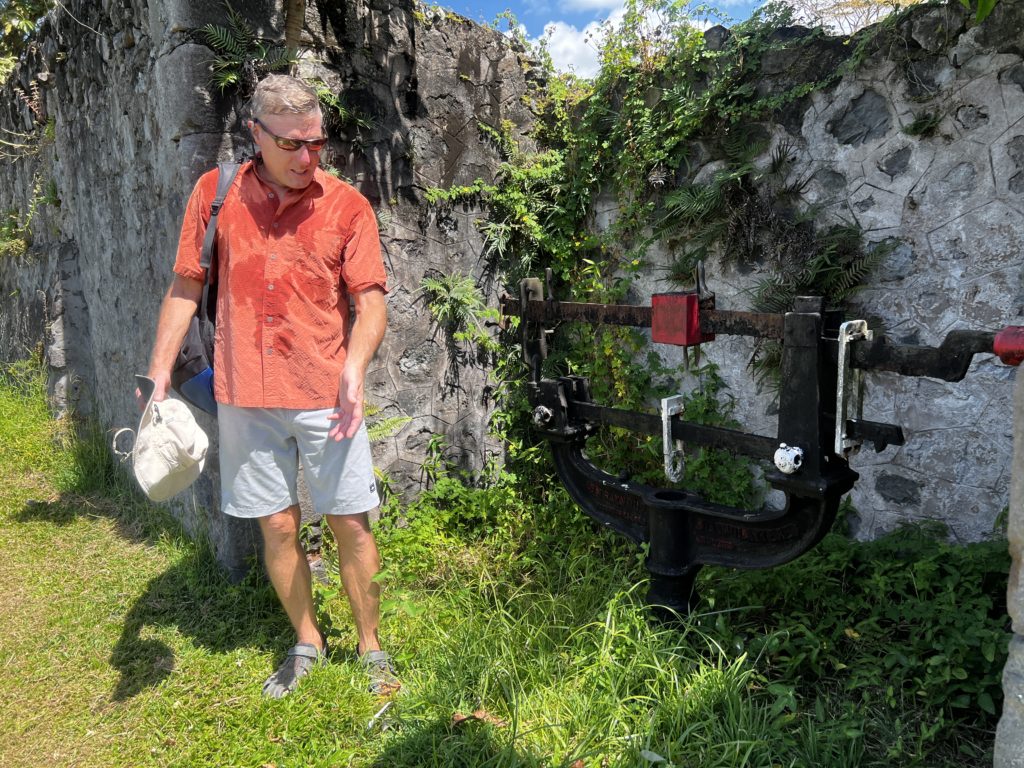
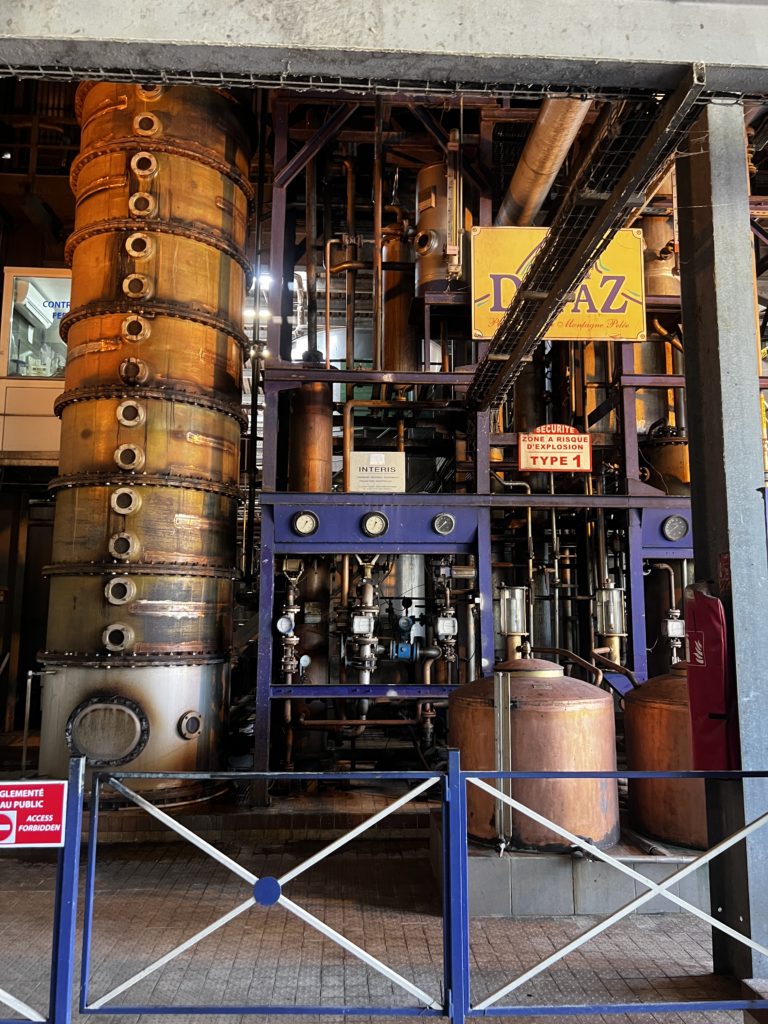
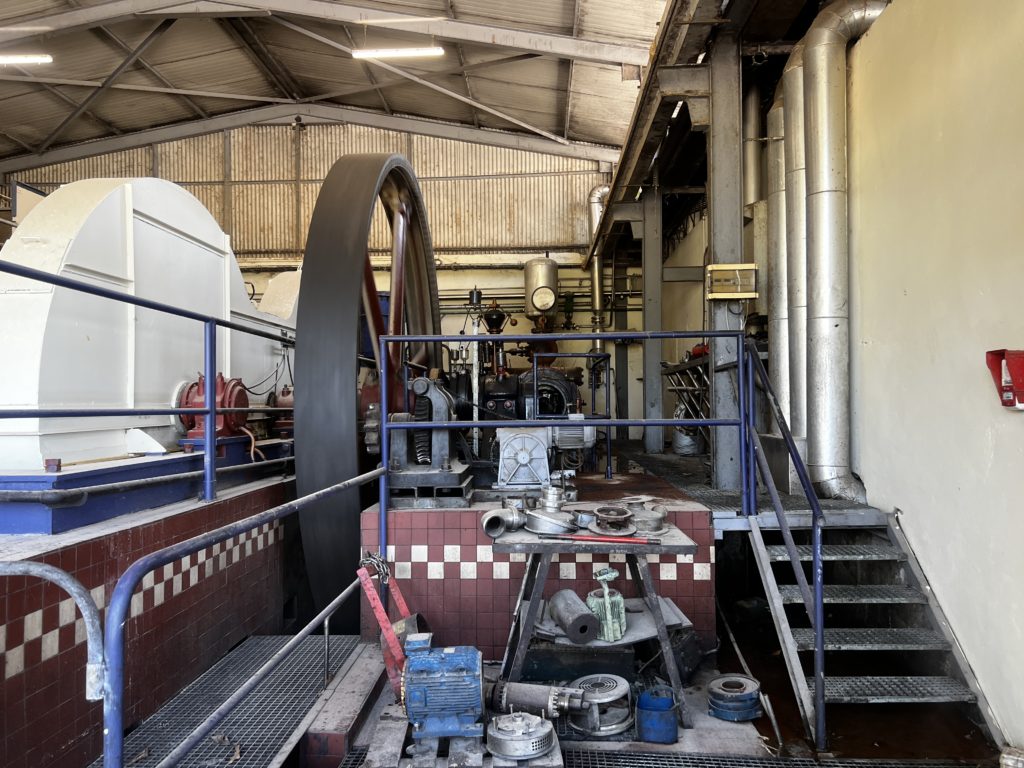
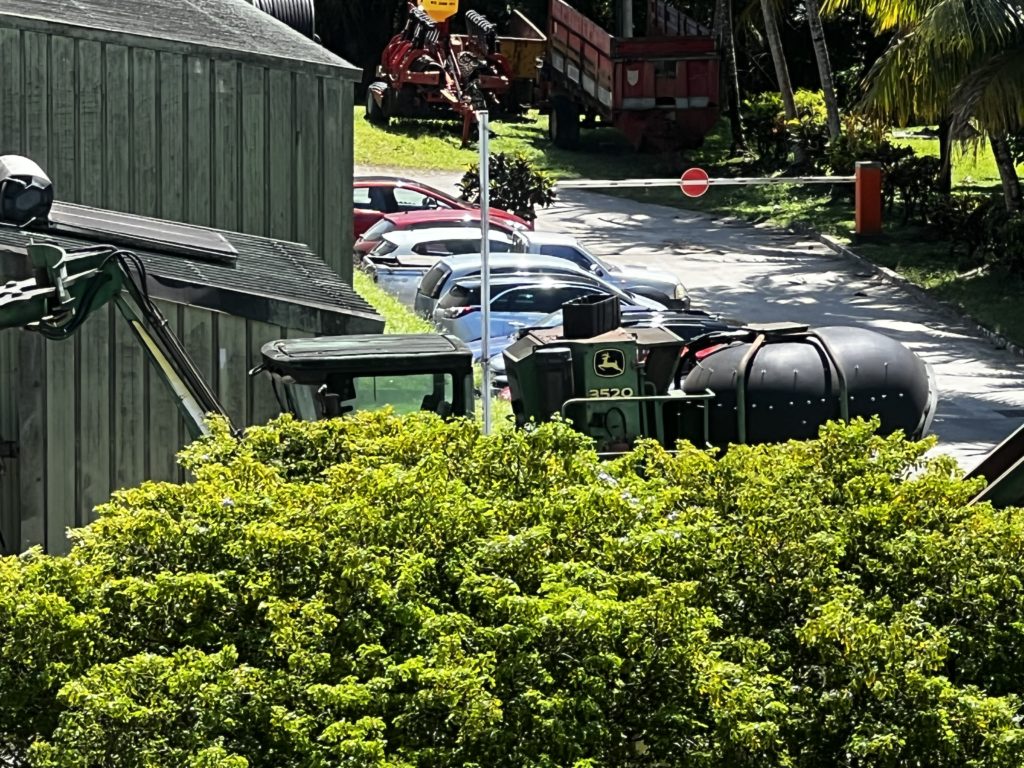
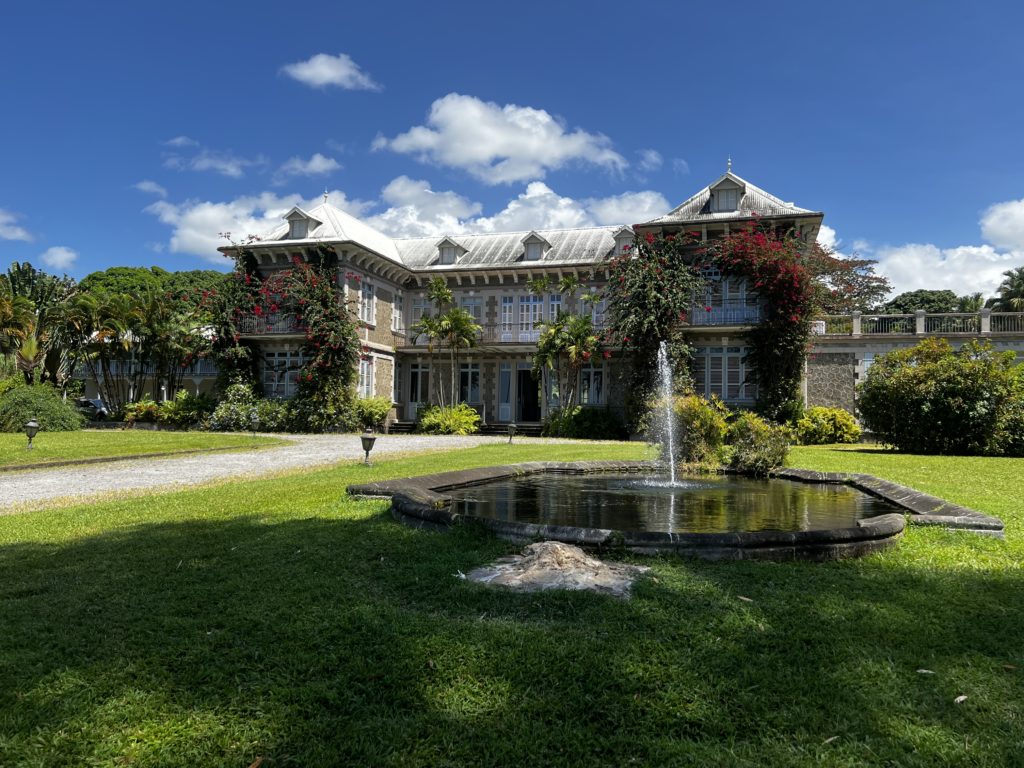
We linked up with our friends from ROAM, Roy, Amy Marie and the tykes Roy and Phil for a short walk up the mountain side for lunch at the Fromagerie which had good food but strangely no cheese? The view was wonderful however. We said our farewells, as they are heading farther south for the summer, and we will be turning north. We’ll see them along the road somewhere.
We’ve moved down into the bay which houses Fort De France and are anchored to the west near the village of Trois Ilets. It is a quiet, calm spot with 20′ of depth and no swell. This is where Empress Josephine was born (remember Napoleon?) and it is unique in that many of the buildings are still wooden with these cute petal-shaped shingles that are manufactured only by the pottery outside of town.
Nancy has sold a few paintings, and I have chased down a few electronic gremlins so things are progressing satisfactorily. We’ll be moving around Martinique for a couple more weeks to do some diving. We’re both getting over a sinus/ear infection which has kept us on the surface for the last ten days, but we have been treating them and are now recovered, so down we’ll go.
We’ve been getting in a lot of reading and painting so be sure to check out the Book Nook and Studio for the newest installments. Don’t forget to subscribe and write if you want to join us!















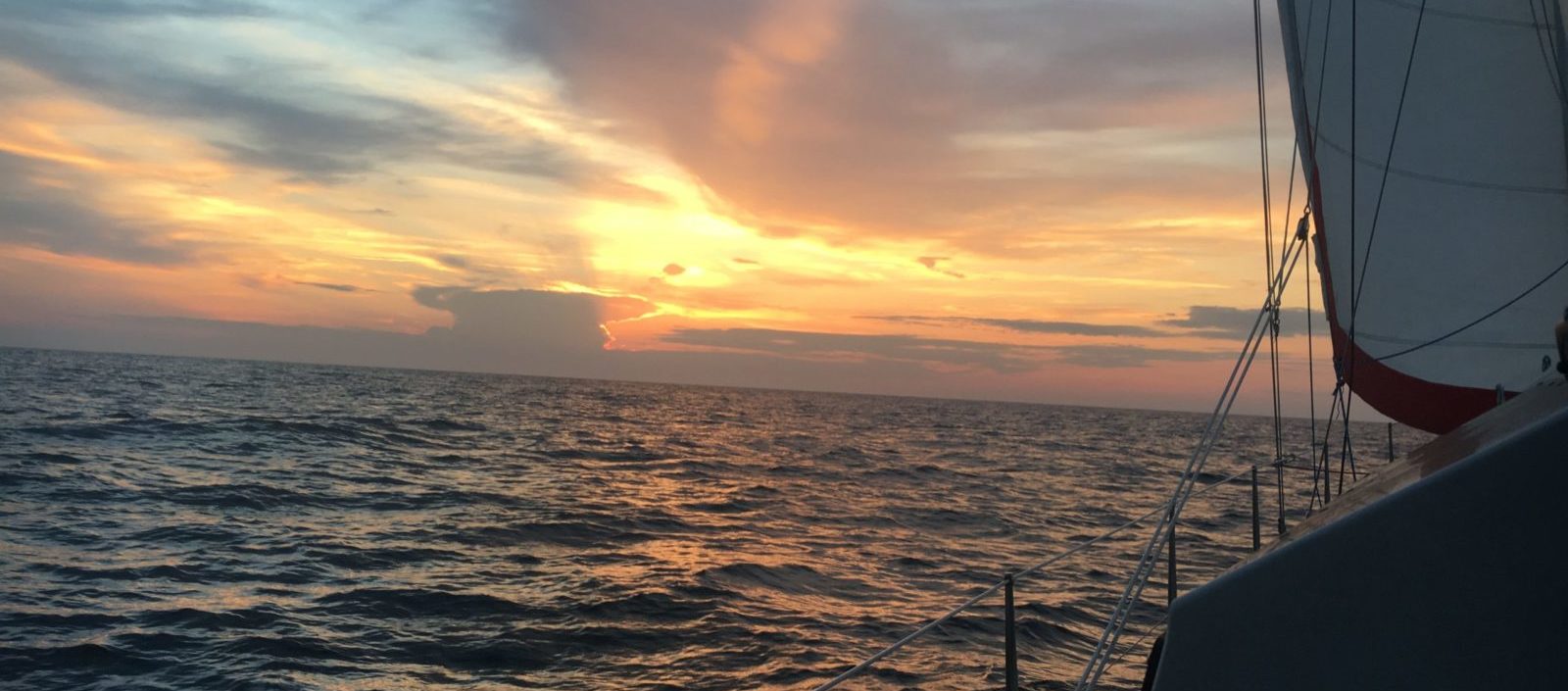
Chris
Tracey Wade
Darlene
mcguireyacht_0rilfr